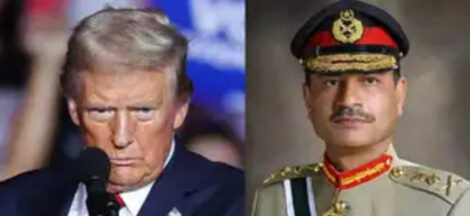By Dr. Nilanjan Banik
Days of pressure from fellow Republicans, business executives, and even close friends had not moved Donald Trump. On April 2, 2025—his self-styled “Liberation Day”—the former President insisted: “MY POLICIES WILL NEVER CHANGE.” Yet just over a week later, on April 10, Trump backtracked, announcing a three-month pause in his sweeping tariff plan. Even so, his 10% across-the-board tariffs remained in place.
Now, a federal court in Manhattan has delivered a far more decisive blow. In an order dated May 28, 2025, the court ruled that the authority to impose such sweeping tariffs does not lie within the powers of the presidency. The judgment directed the Trump administration “to effectuate the permanent injunction” on the matter, marking a significant legal rebuke to his tariff policy. Trump got a temporary relief on Thursday in the court but the main issue of his tariff policy remains to be heard.
Trump had invoked the International Emergency Economic Powers Act (IEEPA) of 1977 and Section 232 of the Trade Expansion Act of 1962—both of which allow a President to restrict imports deemed a threat to national security. However, IEEPA merely gives the President the authority to “regulate” imports, without explicitly mentioning tariffs. Trump’s team argued that this authority implicitly covered tariff imposition. The court disagreed.
One legal way to regulate imports is through quotas—an argument the Trump administration leaned on, especially when targeting Chinese and Mexican imports as part of its crackdown on fentanyl and other drug-related flows. But using tariffs as a protectionist measure on normal imports from long-standing trading partners finds no explicit or implied support in the statutes. The court’s ruling thus restores the legislative limits that prevent the misuse of emergency powers for broad economic warfare.
This decision is likely to bring relief to millions of small businesses in the United States, particularly those that rely on imports from China. It is well documented that tariffs disrupt global trade flows—the very flows that have underpinned five decades of unprecedented prosperity. Arbitrary protectionism introduces inflationary pressures, increases business uncertainty, and can trigger retaliatory measures from trading partners. In sectors like pharmaceuticals, the impact is especially regressive. Demand for medicines is largely price inelastic, which means importers can pass on higher costs directly to consumers—often with disproportionate effects on lower-income households.
Historical examples suggest that tariff-led protectionism rarely delivers long-term economic strength. Consider Argentina. At the start of the 20th century, its per-capita income was among the highest in the world—rivalling the United States and exceeding France and Germany. But a combination of inward-looking policies and trade restrictions led to decades of stagnation. Today, Argentina’s per-capita income stands at roughly $14,000, compared to the United States’ $83,000.
By contrast, the United States embraced openness. After World War II, as it grew wealthier, domestic labour costs made it less competitive in traditional industries such as textiles and garments. Rather than resisting the shift, US policymakers chose to invest in higher education, promote scientific research, and implement a liberal skilled-labour migration policy. They did not seek to dominate in low-margin manufacturing but aimed for leadership in high-value services and innovation.
Trump’s recent tariff measures reflect a reversal of that trajectory. Yet in practice, importers and businesses have found ways to adapt or even circumvent the tariffs. One common method is altering the country of origin—rerouting goods through third countries that face lower US tariffs. Another is the use of the ‘first sale rule,’ under which import duties are calculated based on the initial sale price rather than the final retail markup.
For example, if a Chinese manufacturer sells toys to a wholesaler, who then adds a markup before selling to a US retailer, the duty can still be assessed on the original manufacturer’s price. This allows retailers to reduce their effective tariff burden, blunting the policy’s intended effect.
International response has been swift and coordinated. Major US trading partners—including China, the European Union, and Japan—have treated Trump’s actions not as legitimate economic policy but as strategic provocation. They understand that tariffs alone cannot resolve America’s trade deficit and view the US posture as a negotiating tactic rather than a long-term solution. Japan, in particular, has pressed hard for removal of tariffs on metals and auto components, insisting that existing levies are already high and disproportionately punitive.
India, watching this unfold, should also reconsider its own approach. While India often takes a defensive posture in trade negotiations, this episode underscores the importance of boldness. Whether in the context of WTO reforms, digital services taxes, or sector-specific tariffs, India must be prepared to push back more firmly and negotiate from a position of confidence. Trump’s rollback, and the court’s ruling, demonstrate that aggressive posturing in global trade can meet both legal and diplomatic limits.
In the end, tariffs are a blunt instrument. While they may generate political capital in the short term, their long-term consequences often weaken the very economy they claim to protect. Trump’s tariff wall, built on shaky legal ground and poor economic logic, is now beginning to crumble under the weight of facts—and of the law. (IPA Service)
** The writer is a Professor of Management at Mahindra University.


